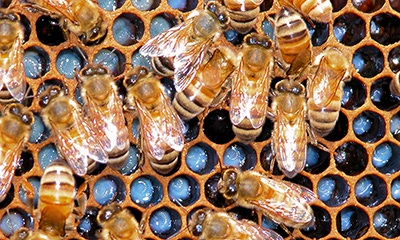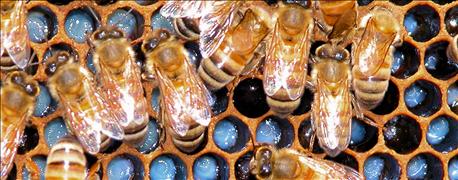April 13, 2016

Maryland’s General Assembly has put a “bee in the bonnet” of Jeff Donald and it’s really buzzing him. The legislators recently sent a bill banning sales of neonic insecticides for unlicensed (non-certified applicator) use to Governor Larry Hogan’s desk to sign or to veto.
Donald, communications person for Bayer Crop Science is rightfully buzzed. After all, Bayer is a major marketer of neonicotinoid insecticides, including imidacloprids. But he’s not alone in his disapproval, and points out why the proposed ban is a bad bill.

NO DIRECT EFFECT: Despite scientific evidence pointing to no direct effect of neonics on bees, Maryland legislators vote to curb consumer use.
“The Maryland legislature could have looked to experts at federal regulatory agencies who have studied neonics extensively and deemed them safe for use,” says Donald. “They could have looked to some of the state’s own scientists who found, “the world’s most common insecticide doesn’t significantly harm honey bee colonies at real-world dosage levels.
“Even the state Agriculture Secretary [Joe Bartenfelder] testified his department ‘has not documented any cases of neonicotinoid pesticides negatively impacting honeybees in Maryland.’ Instead, they chose not to.”
Based on faulty premise
The bill is based on the premise that bees are declining and neonics are the reason. The reality, contends Donald, is that the U.S. bee population has been steadily rising over the past 20 years, precisely during the time of widespread neonics adoption.
A 2015 University of Maryland study found that imadcloprid doesn’t significantly harm honey bee colonies at real-world dosage levels. “Everyone is pointing the finger at these insecticides. If you pull up a search on the Internet, that’s practically all anyone is talking about,” says Galen Dively, emeritus professor of entomology at UMD and lead author of the study. “This paper says: ‘No, it’s not the sole cause. It contributes, but there’s a bigger picture.”
To see significant negative effects, including a sharp decrease in winter survival rates, the researchers had to expose the colonies to at least four times as much insecticide encountered under normal circumstances.
The study doesn’t totally absolve imidacloprid of a causative role in honey bee colony declines. Rather, the results indicated that insecticides are but one of many factors causing trouble for the world’s honey bee populations.
Dively and his colleagues fed pollen dosed with the insecticide to honey bee colonies. The team purposely constructed a worst-case scenario, even at lower exposure levels. For example, they fed the colonies tainted food for up to 12 continuous weeks. That’s a much longer exposure than bee colonies would experience in real-world scenarios. Most crops don’t bloom for such an extended period of time.
“It’s not surprising that higher levels will hurt insects,” adds UMD Entomologist Dennis vanEngelsdorp. “They’re insecticides after all,” adds the director of Bee Informed Partnership, a collaboration of leading university and federal researchers seeking to better understand honey bee declines “But this study is saying that neonicotinoids probably aren’t the sole culprit at lower, real-world doses.”
Climate differences and bee malnutrition, in particular concern, are concerns for industrial bee colonies rented to large-scale agricultural operations, contend the researchers. Those are the colonies most subject to loss. These bees spend much of their time eating pollen from one or two crops, which throws their diet out of balance, explains vanEngelsdorp.
Colonies coping with these additional pressures may be more sensitive to imidacloprid, adds study coauthor David Hawthorne, UMD entomology and director of education at the National Socio-Environmental Synthesis Center. And there’s evidence of synergistic effect.
At the highest dosage levels (20 times the realistic dosage), colonies became more susceptible to Varroa mites, parasites that target honey bee colonies. A mite infestation can cause a whole variety of problems, including viral infections and an increased need for other pesticides to control the mites.
Those are the main reasons Donald’s bonnet is buzzing over Maryland’s bad bill.
You May Also Like




